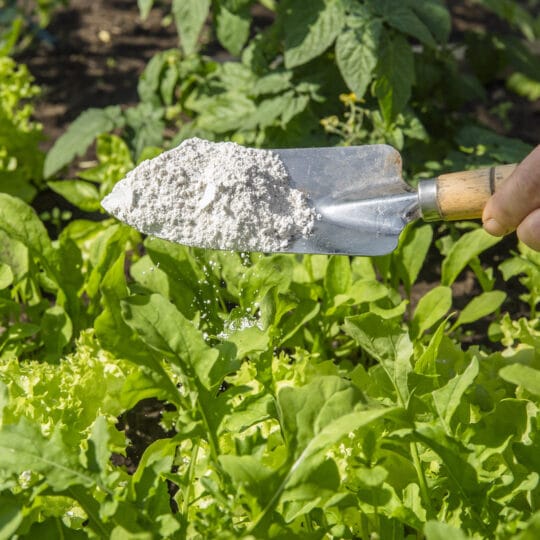The Importance of Soluble Silicon for Plant Health
Why Diatomaceous Earth Is a Top Choice

All plants benefit from silicon. Silicon (Si) exists in all plants grown in soil, making up 0.1% to 10% of plant tissue. Today, we’re looking at why soluble silicon is important for plant health and why diatomaceous earth is a top choice.
Why Soluble Silicon Is Important for Plant Health
Silicon enhances the strength and rigidity of plants, which reduces lodging and pest attacks while increasing the light-receiving posture of the plant, allowing the plant to photosynthesize further and grow more. Silicon found in the culms, leaves, and hulls decrease transpiration from the cuticle, which increases resistance to severe temperatures, radiation, UV, and drought stress. Oppositely, a lack of silicon can even result in poor growth of crops, if not death, that has high silicon content, like rice and sugarcane.
Most plants have low concentrations of silicon in their leaves relative to the grains, but, in the presence of silicon, they still grow better when challenged with disease or environmental stress (droughts, floods, heatwaves, frosts, and nutrient imbalances). Benefits include:
- Improved cell wall strength and structural integrity
- Improved drought and frost resistance
- Decreased lodging potential
- Unfavorable environment for pests and diseases
Sources of Silicon-rich minerals are abundantly available, yet researchers have found it’s the type of silicon that is converted into the plant available form that counts most. This is why alumina silicates and sand don’t offer any plant health benefits. Diatomaceous earth is a trusted and excellent source of soluble silicon.
Why Diatomaceous Earth Is a Top Source of Soluble Silicon
Diatomaceous earth, also known as diatomite and DE, is the naturally occurring fossilized remains of diatoms—single-celled aquatic algae. It is a near-pure sedimentary deposit consisting almost entirely of silicon dioxide. Dicalite’s DE is considered a nonplant food ingredient, measuring in at a well established .26% soluble silicon, meeting AAPFCO’s labeling guidelines for use.
1. Higher Crop Productivity
Numerous studies have shown the benefits of diatomaceous earth as a soil conditioner. For example, a study was conducted to see how strawberries and sweet potatoes responded to a soil conditioner made with diatomaceous earth compared to a control group that was treated with a normal fertilizer application. With this silicon-rich soil conditioner:
- Strawberry root mass was increased by 100% to 200%
- The strawberry plants increased yields by an average of 35%
- There was more fruit, flowers, and bigger crowns
- There was a higher survival rate of strawberry runners, allowing for the potential of more crops
- Sweet potato plants treated with a base soil conditioner pre-planting delivered 47% improvement in yield and gross margin
2. Improved Growing Conditions & Durability
The studies also concluded the addition of diatomaceous earth as plant-available silicon improved the growing environment and quality.
- There was an increased uptake of key nutrients during the wet period when nutrients are typically leached away from the root zone
- Natural diatomaceous earth improves the moisture retention in potting mix and soil by retaining a greater quantity of water and drying at a slower rate—all without waterlogging.
- It creates an unfavorable environment for hard- and soft-bodied pests.
AAPFCO’s Recent Ruling on Diatomaceous Earth as a Soluble Silicon Source
AAPFCO is the Association of American Plant Food Control Officials. The association’s purpose is to achieve uniformity consensus by providing a forum through which members may unite to promote uniform and effective legislation, develop high standards of fertilizer inspection, promote adequate labeling and safe use of fertilizers, and more. Each state in the United States is represented.
Horticulturists have known for a long time the benefits of diatomaceous earth as a source of soluble silicon. Recently, the Terms and Definitions Committee voted about the terms and definitions surrounding diatomaceous earth. They passed the motion that it is appropriate to say “uncalcined diatomaceous earth contains amorphous silicon dioxide and is a natural source of soluble silicon that may contain Ca, Mg, or Fe.”
The Many Benefits of Diatomaceous Earth for Growing
The results of a Southern Cross University study suggest that the addition of diatomaceous earth to soil condition fertilizer may allow for more efficient use of fertilizer and reduce the impact that fertilizer has on the environment through leaching.
Dicalite’s Diatomaceous Earth
Our natural diatomaceous earth meets the NOP (National Organic Program) standards. It is sourced from our Basalt, Nevada facility and is dried and sized without further processing and sold in its natural form. Call us today at 866-728-3303 to request your free sample.
There’s more to explore! Use our Product Search Database to search and find your diatomaceous earth and all the technical information related to it. At any moment in time, you can access our products’ Technical Data Sheets (TDS), Safety Data Sheets (SDS), and sales support materials (when applicable). Find the right mineral solution is easy: simply apply filters so you only see the products relevant to you.
Join Our Mailing List
Our blog offers insight and information about new and exciting uses for perlite, diatomaceous earth, and vermiculite deriving from years of research and application. From passive fire resistance to mineral depth filtration, by subscribing to our mailing list, you will receive the latest information surrounding the Dicalite, Dicaperl, and Specialty Vermiculite brands and products.